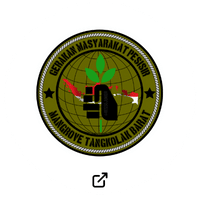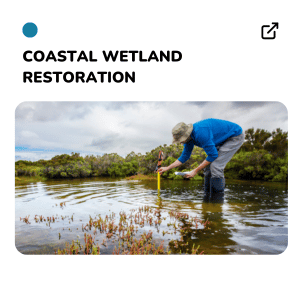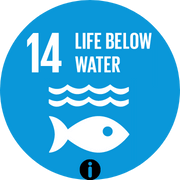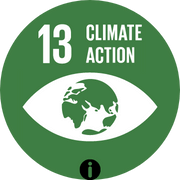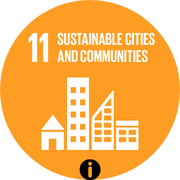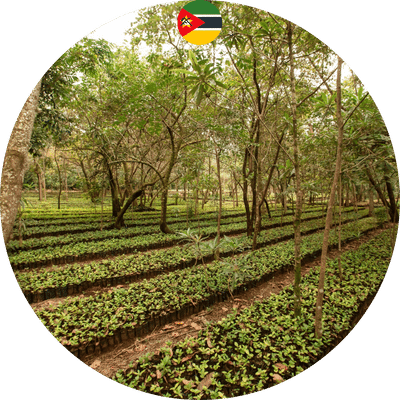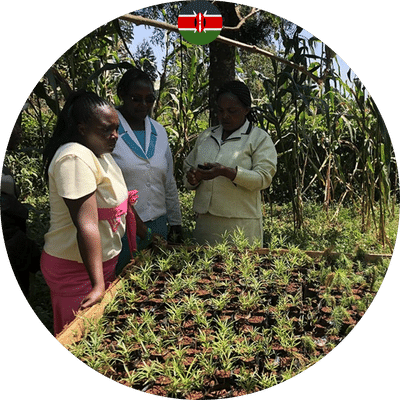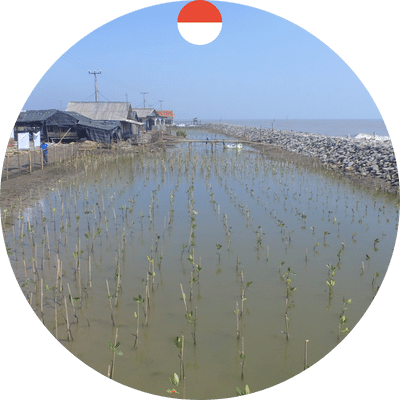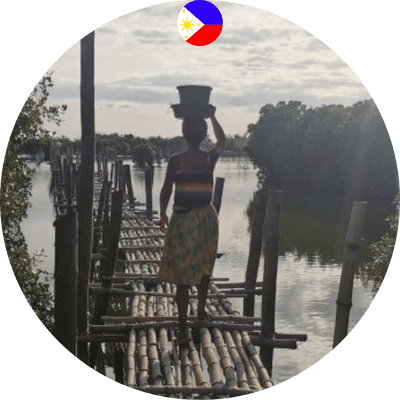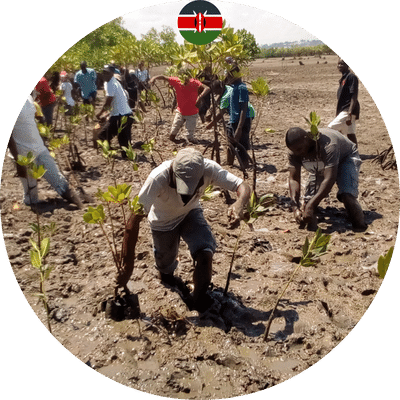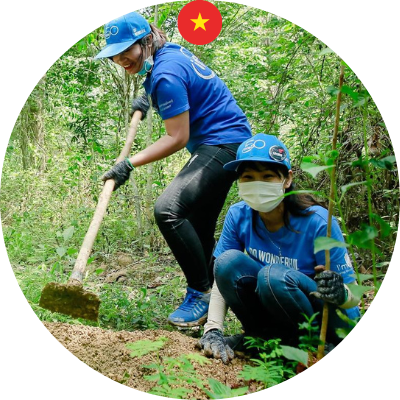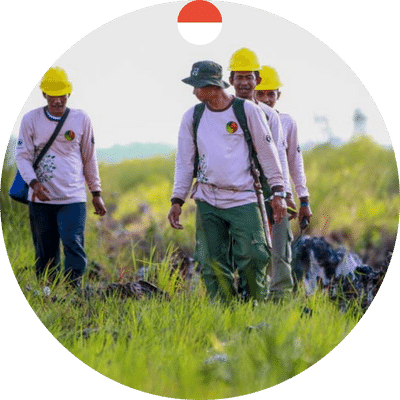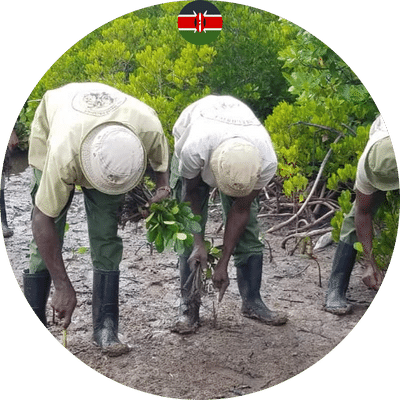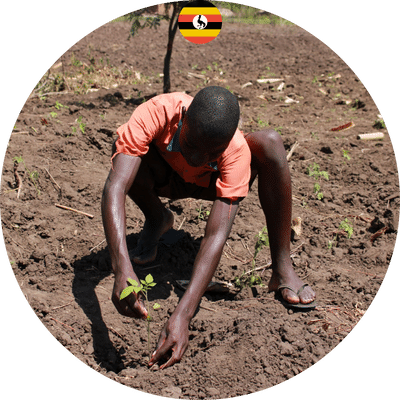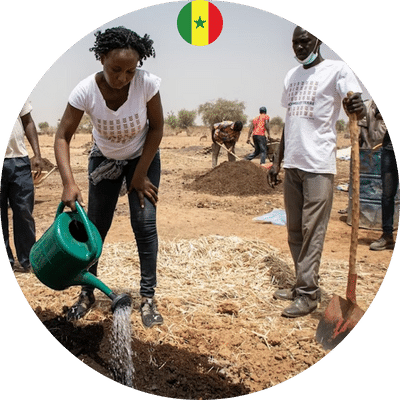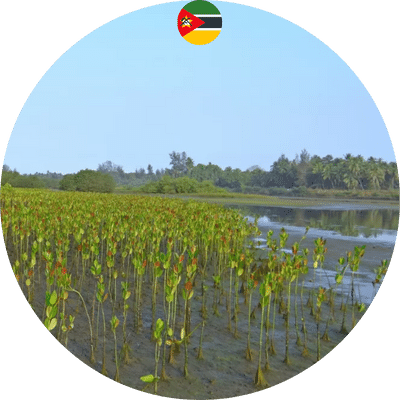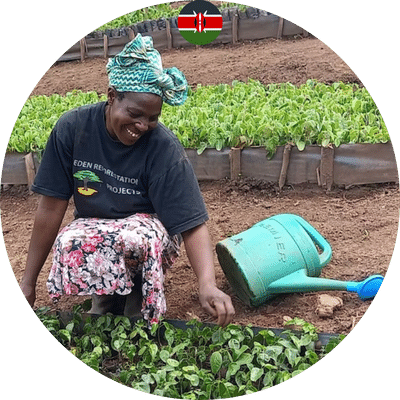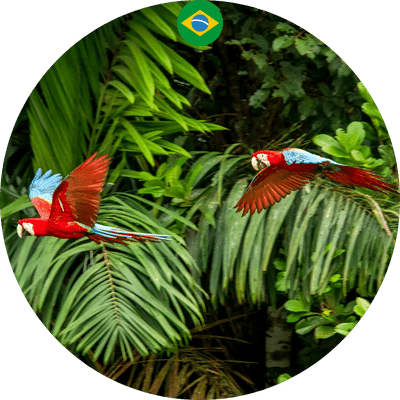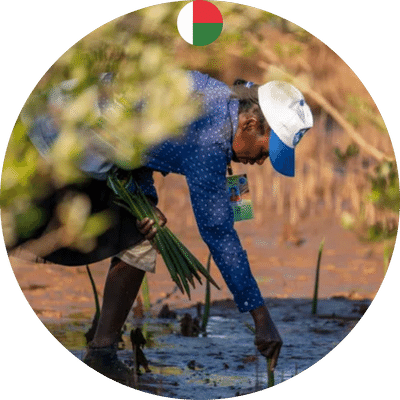Building breakwaters in Sukakerta
Project location
Sukakerta is a village in West Java, Indonesia, and is known for its agricultural activities and scenic landscapes. With 5600 inhabitants a small community, but still extensive in terms of area.
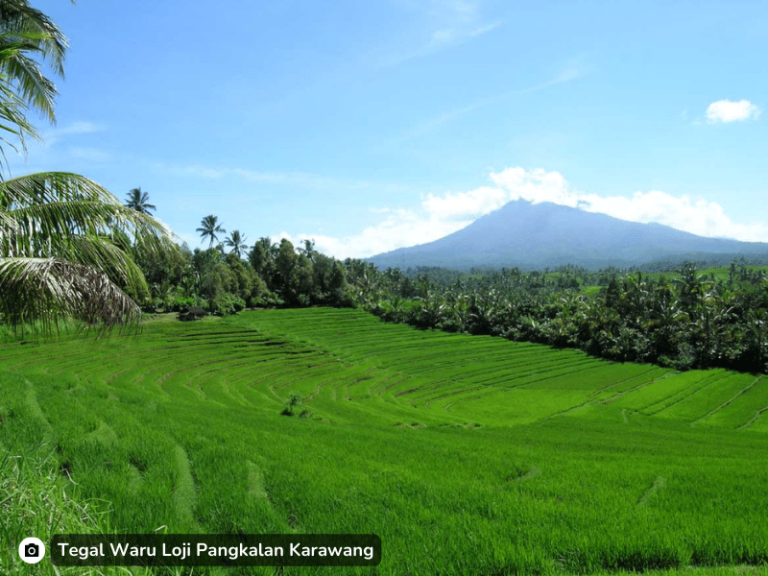
Agriculture plays an important role in the region. The village is mainly engaged in the cultivation of rice, corn, vegetables and various fruits. The region’s fertile soil and favourable climate support agricultural activity, making it a productive agricultural area.
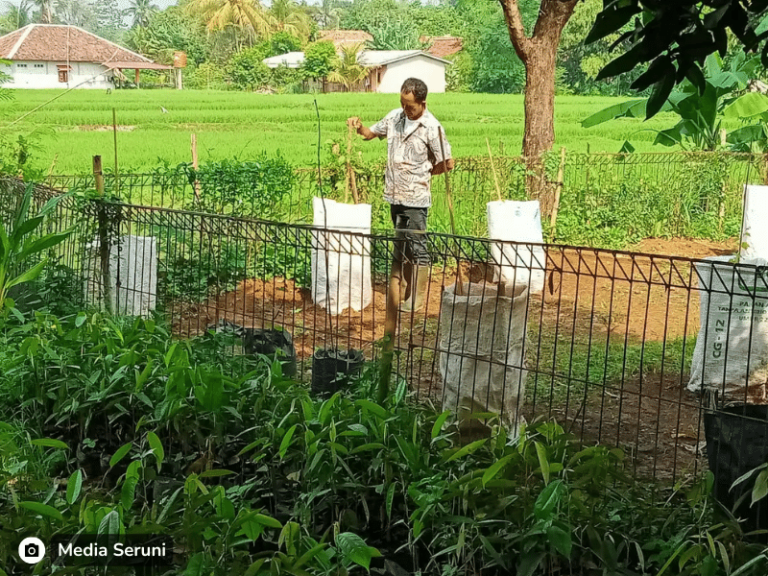
Apart from agriculture, Sukakerta is also known for its natural attractions. The place is surrounded by beautiful landscapes including hills, mountains, and forests that add to the picturesque scenery. Many tourists like to visit the place for hiking, trekking and enjoying panoramic views of the surrounding areas.
Planting partner
The Coastal Community Movement, known as Gerakan Masyarakat Pesisir, is a grassroots organisation based in the municipality. Since its foundation in 2018, they have focused on a single project that remains their main priority. Their goal is to combat erosion in coastal areas by planting mangroves and creating natural breakwaters.
We have great admiration for their tireless efforts over the past six years. Despite challenges, they have always succeeded in inspiring and involving a diverse group of local volunteers in the recovery of the coastal region.
The Project
When picturing breakwaters, one typically imagines solid structures composed of concrete blocks or rocks strategically placed to safeguard shorelines and coastal regions against the erosive impact of waves and currents.
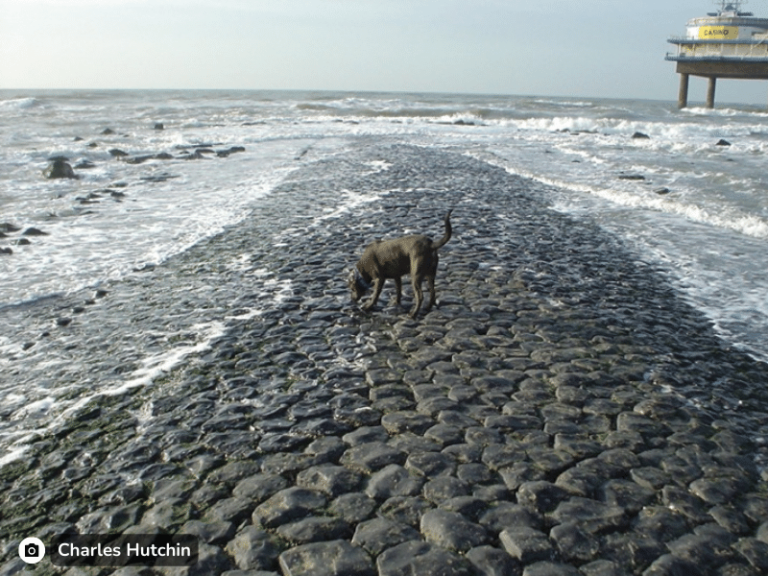
However, breakwaters are frequently constructed as a means of coastal protection. These breakwaters are positioned parallel to the coast, forming a calm zone shielded from waves. The ultimate objective is to facilitate the natural expansion of the coastline, effectively resolving local erosion concerns.
Breakwaters not only protect the shore from erosion but also serves as a refuge for boats, allowing for safer navigation and mooring. Breakwaters are an essential component of coastal engineering and play a crucial role in coastal management, safeguarding coastal communities and their infrastructure from the destructive forces of the sea.
This project aims to restore, improve and expand the natural breakwaters in Sukakerta by planting Rhizophora and Avicennia species to prevent erosion. Choosing a natural breakwater, such as mangroves, over breakwaters made from concrete or rocks can offer several advantages. We’ve listed some advantages below, but it’s important to note that the choice between natural and artificial breakwaters depends on various factors, including specific coastal conditions, available resources, and the goals of coastal management.
Natural breakwaters, like mangroves, are part of the coastal ecosystem and provide ecological benefits. They promote biodiversity, serve as habitats for numerous species, and contribute to the overall health of the coastal environment. Choosing natural breakwaters supports ecosystem conservation and sustainability, ensuring the preservation of valuable natural resources.
Natural breakwaters are often a more cost-effective solution in the long run when compared to constructing artificial structures. Initially, some investment may be needed for mangrove restoration or conservation efforts, but once established, natural breakwaters generally require minimal ongoing maintenance. On the other hand, artificial breakwaters made from concrete or rocks may necessitate regular repairs and maintenance, which can become costly over time.
Natural breakwaters have the ability to adapt and respond to changing coastal conditions. Mangroves, for example, can grow and expand as sea levels rise, providing ongoing protection. They also have a degree of flexibility to withstand storm events by bending and absorbing wave energy. In contrast, rigid structures like concrete breakwaters may be susceptible to damage or failure under extreme wave conditions.
Natural breakwaters, such as mangroves, can trap and accumulate sediment, helping to build up the shoreline and counteract erosion. This sediment accumulation can contribute to the overall stability of the coastline and provide a natural response to sea-level rise and changing sediment dynamics.
Natural breakwaters often blend harmoniously with the surrounding landscape, adding aesthetic value to coastal areas. They create visually appealing natural habitats that can be enjoyed by both locals and visitors. Additionally, natural breakwaters can provide recreational opportunities such as birdwatching, kayaking, and nature walks, enhancing the overall experience for coastal communities and tourists.

Coastal Wetland Protection
Seagrasses, mangroves, and salt marshes all greatly increase the amount of carbon stored in soil and plant life. Their preservation prevents deterioration and maintains their carbon sinks.
Project validation
This project is not certified for carbon credits. You can follow this project on Restor for project updates and progress via satellite imagery.
Photos 📷








IUCN Red List
The state of the world’s biodiversity can be determined in large part by looking at the IUCN Red List. It is a powerful instrument to inform and spark action for biodiversity conservation and policy change, which is essential to safeguarding the natural resources we depend on for survival. It is much more than a list of species and their condition.
The montane tropical rainforests of West Java are not only rich in biodiversity but also harbour a multitude of endangered plant and animal species. These unique species, found exclusively in this region, face imminent threats due to the rapid loss of their natural habitat caused by deforestation and human activities.
Here are a few examples:
Javan Rhinoceros – Critically Endangered
The Javan Rhinoceros is native to Java and one of the rarest large mammals in the world and is critically endangered.
Sumatran Tiger – critically endangered
The Sumatran tiger is a critically endangered subspecies of tiger. Although they are mainly found in Sumatra, the range extends to parts of West Java.
Javan green magpie – critically endangered
The Javan green magpie is a surprising bird species endemic to Java. It is critically endangered by loss and takeover for the illegal pet trade.
Javan Bonelli’s Eagle – critically endangered
The Javan hawk-eagle is a large roof bird found in the montane forests of Java, including parts of West Java. The species is decreasing due to loss and degradation of admixture.
Rafflesia – Endangered
Rafflesia is a genus of parasitic flowering plants known for producing the largest individual flower in the world. Some species of Rafflesia can be found in West Java. These plants are listed as endangered due to loss and collection of amalgamated.
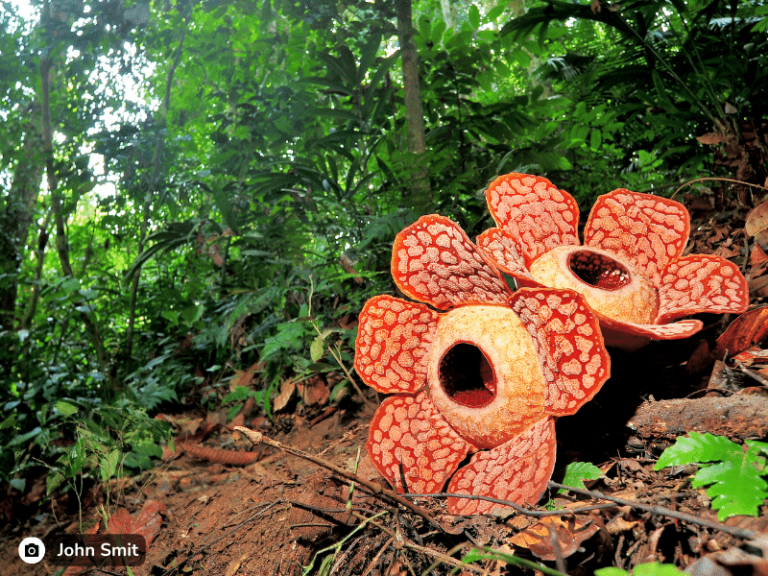
Flora
The flora in Sukakerta showcases the region’s agricultural heritage, coastal ecosystems, and diverse natural landscapes. From rice paddies and fruit orchards to mangrove forests and ornamental gardens, Tegalwaru offers a variety of plant life that contributes to the district’s beauty, economic activities, and cultural traditions.
Apart from Mangroves, here are some notable aspects of the flora in Sukakerta:
Rice Paddies: As an agricultural region, Sukakerta is characterized by vast expanses of rice paddies. These paddies are not only a staple crop but also an integral part of the local landscape. The vibrant green rice plants sway in the breeze, creating a picturesque scene that symbolizes the area’s agricultural heritage.
Fruit Orchards: Sukakertais known for its fruit orchards, where a variety of tropical fruits are cultivated. You can find orchards filled with mangoes, bananas, durians, rambutans, and other local fruit varieties. These orchards not only contribute to the local economy but also offer a delightful experience for visitors who can explore and taste the fresh and juicy fruits.
Forests and Vegetation: The region is surrounded by forests and vegetation, contributing to the district’s natural beauty. The forests consist of a mix of deciduous and evergreen trees, including teak, mahogany, and bamboo. The lush vegetation provides habitat for diverse plant species, as well as wildlife, contributing to the overall biodiversity of the area.
Ornamental Plants and Flowers: In residential areas and gardens, Tegalwaru showcases a variety of ornamental plants and flowers. Colourful blossoms such as roses, orchids, and jasmine are often cultivated for their beauty and fragrance. These plants add vibrancy and charm to the surroundings, enhancing the visual appeal of the district.
Medicinal Plants: Sukakerta is also home to various medicinal plants that are traditionally used for their healing properties. Local communities often cultivate and utilize plants like turmeric, ginger, lemongrass, and others for their medicinal benefits. These plants play a role in traditional herbal remedies and alternative medicine practices.
Fauna
The district supports a variety of bird species, including parrots, kingfishers, eagles, and other migratory and resident birds. These avian inhabitants find sanctuary in the forests, mangroves, and agricultural areas of Sukakerta. Additionally, small mammals such as squirrels and monkeys can be spotted in the region, adding to the wildlife diversity. The coastal areas provide habitats for various marine life, including fish, crustaceans, and molluscs.
The combination of terrestrial, avian, and marine fauna in Sukakerta contributes to the ecological balance and provides opportunities for wildlife observation and appreciation.




